Apollo
17
Apollo 17 was the final mission of the United States' Apollo lunar landing program, and was the sixth landing of humans on the Moon. Launched at 12:33 AM Eastern Standard Time on December 7, 1972, with a three-member crew consisting of Commander Eugene Cernan, Command Module Pilot Ronald Evans, and Lunar Module Pilot Harrison Schmitt, Apollo 17 remains the most recent manned Moon landing and the most recent crewed flight beyond low Earth
orbit. After Apollo 17, extra Apollo spacecraft were used in the Skylab and Apollo–Soyuz Test Project programs.
Apollo 17 was the sixth Apollo lunar landing, the first night launch of a U.S. human spaceflight and the final crewed launch of a Saturn V rocket. It was a "J-type mission," missions including three-day lunar surface stays, extended scientific capability, and the third Lunar Roving Vehicle.
While Evans remained in lunar orbit above in the Command/Service Module, Cernan and Schmitt spent just over three days on the lunar surface in the Taurus-Littrow valley, conducting three periods of extra-vehicular activity, or moonwalks, during which they collected lunar samples and deployed scientific instruments. Cernan, Evans, and Schmitt returned to Earth on December 19 after an approximately 12-day
mission.
The decision
to land in the Taurus-Littrow valley was made with the primary
objectives for Apollo 17 in mind: to sample lunar highland
material older than the impact that formed Mare Imbrium and
investigating the possibility of relatively young volcanic
activity in the same vicinity. Taurus-Littrow was selected with
the prospects of finding highland material in the valley's north
and south walls and the possibility that several craters in the
valley surrounded by dark material could be linked to volcanic
activity. |
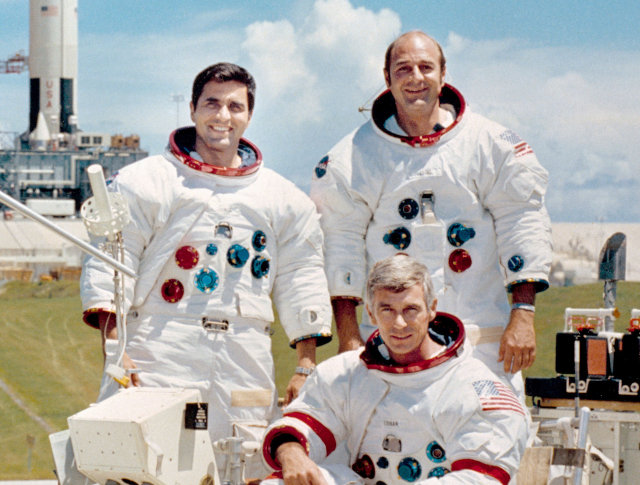
Harrison Schmitt, Eugene Cernan (seated),
Ronald Evans
Picture credit
NASA |
Apollo 17 also broke several records set by previous flights, including the longest manned lunar landing flight; the longest total lunar surface extravehicular activities; the largest lunar sample return, and the longest time in lunar orbit.
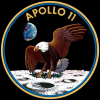 |
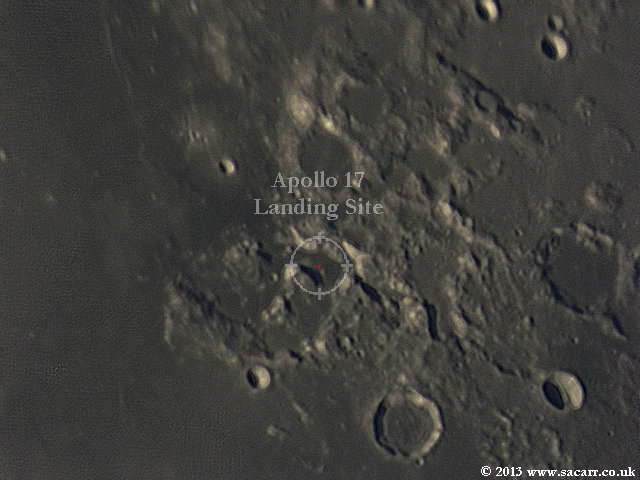
My image was
taken with a Trust Spacecam 380, using a x3 barlow and a 4 minute
AVI shot at 15 fps. This brightly illuminated area shows little
detail at this time of the month. The Moon was also fairly low in
the sky, around 17 degrees above the horizon. I'd like to make
another attempt when the Moon is higher in the sky and the shadows
more favourable.
The large
crater just above the target is Littrow, a 19 mile
diameter crater. The small dots at the bottom of the picture are 4
mile craters.
Position -
Long 30.8 deg East, Lat 20.1 deg North
Area - Mare Tranquillitatis North area
The picture
below is a close up image from the Virtual
Moon software, a valuable aid in this project. Littrow is the
large crater above the red dot, while to its left is Clerke, a 4
mile crater, seen as a bright white dot in the picture above.
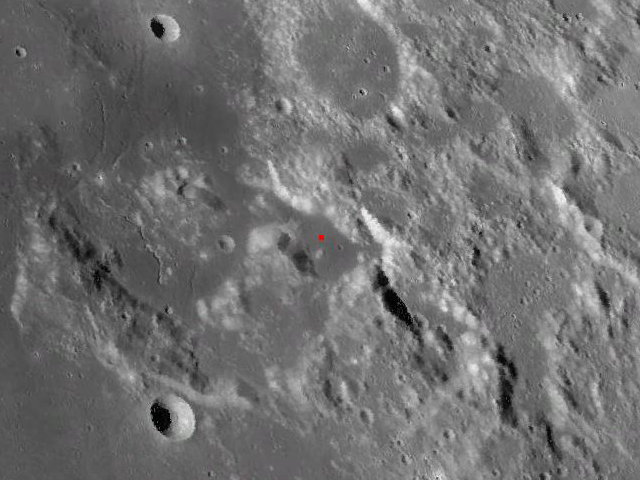
|
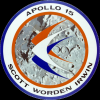 |
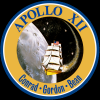 |
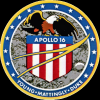 |
 |
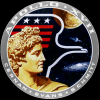 |
|
Eugene A. Cernan, commander, makes a short checkout of the Lunar Roving Vehicle (LRV).
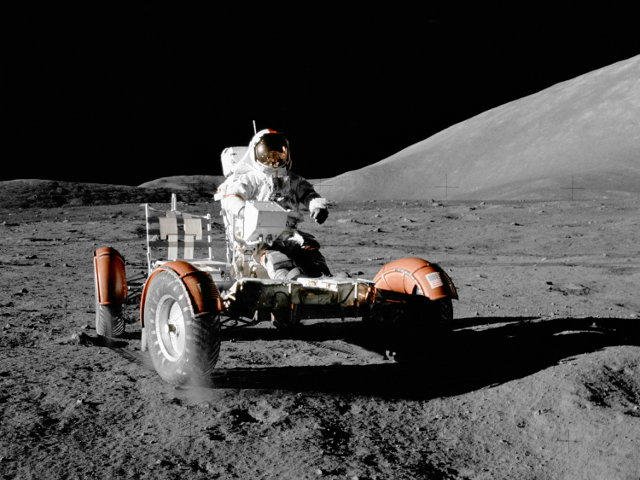
Picture credit
NASA
|
|
|
|
|
|
Text about the
missions via Wikipedia
Extreme close up
images via Virtual
Moon Atlas
|









